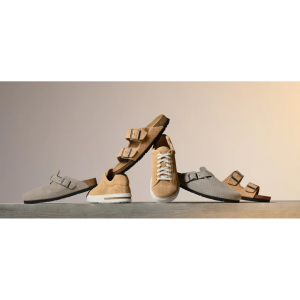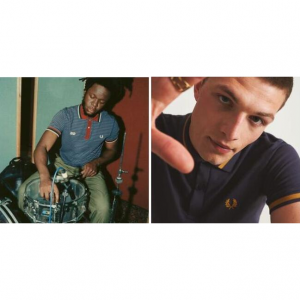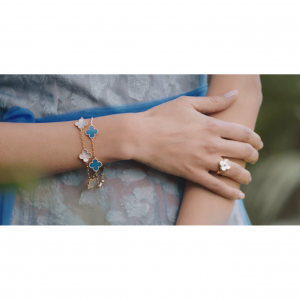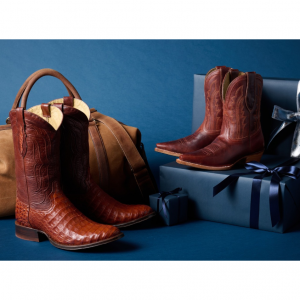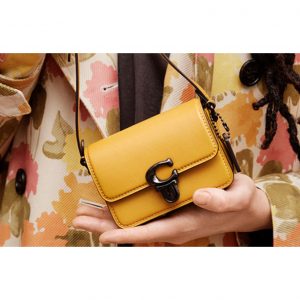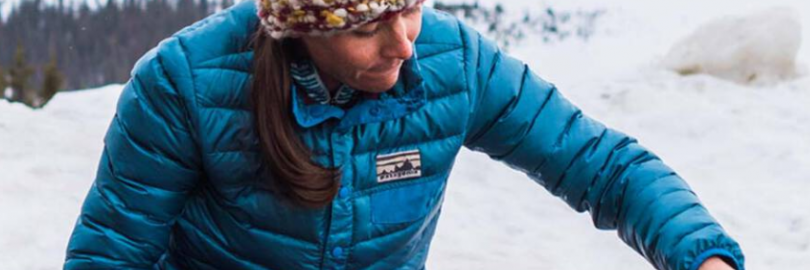
Patagonia Nano Puff vs. Micro Puff vs. Down Sweater: Differences and Reviews 2025
Patagonia products are favorites among those who love outdoor adventures, including hikers, climbers, skiers and campers. If you've been looking for a nice lightweight insulated jacket to wear in cold weather or to keep you warm around camp at night, take Patagonia into consideration which provides many insulated jacket models for you to choose from, three of the most classic styles are the Down Sweater, the Nano Puff and Micro puff jackets. This trio of insulated jackets look similar, but they have their differences. So how do they differ from each other? which Patagonia jacket should you buy, the Nano Puff, the Micro puff or the Down Sweater? Take a look at my comparison of these three jackets and get my tips on which one is best for you.
Patagonia Nano Puff vs. Micro Puff vs. Down Sweater: Overview
1. Patagonia Nano Puff
Official Price: $119 - $299
Colors: Lagom Blue, Nouveau Green, Black, Belay Blue, Birch White, Pale Periwinkle, Feather Grey, Burl Red, Obsidian Plum, Classic Navy, Sage Khaki, Burl Red
Material:
Shell: 1.4-oz 20-denier 100% recycled polyester ripstop with a PFC-free DWR finish (durable water repellent coating that does not contain perfluorinated chemicals)
Lining: 1.3-oz 22-denier 100% recycled polyester ripstop with a PFC-free DWR finish
Insulation: 60-g PrimaLoft® Gold Insulation Eco 100% postconsumer recycled polyester with P.U.R.E.™ (Produced Using Reduced Emissions) technology
Reviews: Ever since it was introduced to the market in 2010, the Nano Puff jacket has been one of the most popular Patagonia products. Outdoor gear lovers fell in love with this puffer primarily because of its versatility. The Nano Puff is a durable, warm and well-loved layer for chilly and possibly wet conditions. It uses incredibly lightweight and highly compressible 60-g PrimaLoft Gold Insulation Eco 100% postconsumer recycled polyester with P.U.R.E.™ (Produced Using Reduced Emissions) technology, wrapped in a 100% recycled polyester shell and lining. There are very few warm but lightweight synthetic materials that can come close to Nano Puff’s PrimaLoft insulation.

The Nano Puff is lightweight and can be packed down into a very compact bundle that doesn't take up much room in your kit bag. The jacket sports key weatherproof properties and roomy zippered pockets. The internal chest pocket is big enough for a buff, hat, or a small hydration bladder. It even doubles as the jacket’s self stuffing sack. The cinch at the hem and the elastic cuffs do a great job of sealing out the cold. You can count on the solid liner and the face fabric to block out the wind. The jacket also features a DWR (durable water repellent) finish that beads water quite well. In a word, the Patagonia Nano Puff keeps you comfortable in 30- to 50-degree temperatures.
Features:
Warm, water-resistant, lightweight, insulated jacket from recycled polyester;
Lining fabrics have a DWR (durable water repellent) finish;
Brick quilting pattern with narrow horizontal quilt lines on side panels stabilizes insulation;
Two external pockets and one internal pocket (the internal chest pocket is where the jacket folds up into itself);
Center-front zipper has wicking interior storm flap and zipper garage at chin for next-to-skin comfort;
Elastic cuffs and adjustable hem to make sure you have the perfect fit;
Hooded and hoodless version;
Available in women's model and men's model.
Where to Buy?
dickssportinggoods.com (1.5-2% cashback)
backcountry.com (3-4% cashback)
Saving Tip: If you like online shopping, don't forget to sign up at Extrabux!(What is Extrabux) , then you can enjoy up to 30+% cashback on your purchase from Extrabux! Sign-Up Bonus: Free to join it & get $20 welcome bonus! Student Benefits:As long as you are a student at school, you can get a free whole year long VIP Card worth $199.
Extrabux.com cooperates with many merchants, such as: Walmart (Up to 4% cashback), Sephora(4% -5% cash back), Moosejaw (5% -6% cash back), LOOKFANTASTIC (Up to 10% cash back), Sam's Club (Up to 15% cashback), Norton(Up to 20% cashback), Microsoft (Up to 7% cash back) and so on. You can save on buying daily necessities, fashion, beauty, electronic products, broadband installation, mobile communication, air tickets, hotels and other aspects of life!
2. Patagonia Micro Puff
Official Price: $279 - $329
Colors: Cosmic Gold, Night Plum, Lagom Blue, Black, Obsidian Plum
Material:
Shell and lining: Pertex® Quantum 0.8-oz 10-denier NetPlus® 100% postconsumer recycled nylon ripstop made from recycled fishing nets to help reduce ocean plastic pollution; with a PFC-free DWR finish (durable water repellent coating that does not contain perfluorinated chemicals)
Insulation: 65-g PlumaFill 100% recycled polyester
Patagonia's latest insulation innovation, the Micro Puff, is an evolution of Nano Puff technology. It combines ultralight Pertex Quantum shell fabric with PlumaFill insulation, and the result is the best warmth-to-weight ratio of any jacket they have ever created and the highest compressibility of any of their synthetic jackets. It is your go-to insulation piece for mixed (and possibly miserable) cold conditions. The shell fabric is made with NetPlus® 100% postconsumer recycled nylon ripstop made from recycled fishing nets, and the insulation is 100% recycled polyester.
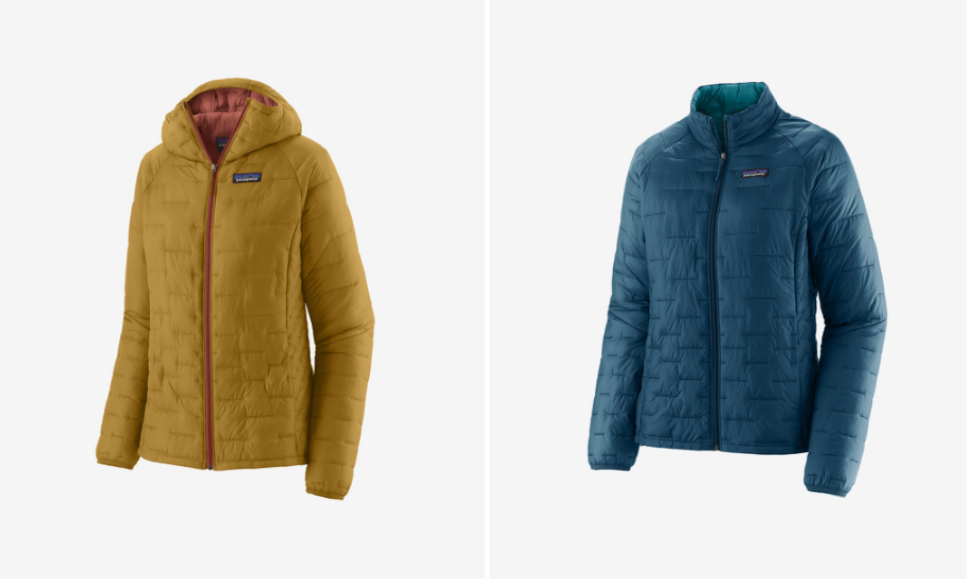
The Micro Puff is comfortable from 35 to 50 degrees, easy to layer in colder weather, and includes YKK zippers, durable water repellent, and PlumaFill synthetic insulation. Plumafill Insulation adds a new layer of warmth and water resistance in all Patagonia Micro Puff products. The Micro Puff offers two hand pockets here and two interior drop-in pockets but no zippered chest pocket. It features synthetic insulation that is comparable to natural down, although, as it is synthetic, it doesn't form fluffy clumps when wet as down does. Overall, the Micro Puff is lighter, warmer, and more packable than the aging Nano Puff, but it’s also more expensive.
Features:
Revolutionary lightweight PlumaFill insulation replicates the structure of down in a continuous synthetic insulation material, offering the warmth and packability of down but with the warm-when-wet performance of synthetic insulation;
Best warmth-to-weight ratio of any jacket Patagonia has ever created and the highest compressibility of any of their synthetic jackets;
Center-front zipper has storm flap and zipper garage at chin for next-to-skin comfort; patterned for high mobility;
Innovative quilting construction complements the insulation by stabilizing and maximizing the loft of the PlumaFill strands with minimal stitching;
Two welted, zippered handwarmer pockets and two internal drop-in pockets;
Elasticized cuffs and adjustable hem seal in warmth;
Available in women's model and men's model.
3. Patagonia Down Sweater
Official Price: $279 - $329
Colors: Basin Green, Cosmic Gold, Carmine Red, Passage Blue, New Navy, Belay Blue, Black, Wool White, Night Plum, Nouveau Green, Burl Red, Herring Grey
Material:
Shell and lining: 1.2-oz 20-denier NetPlus® 100% postconsumer recycled nylon downproof ripstop made from recycled fishing nets to help reduce ocean plastic pollution; with a PFC-free DWR finish (durable water repellent coating that does not contain perfluorinated chemicals)
Insulation: 800-fill-power 100% Responsible Down Standard down certified by Control Union (CU 880272)
The Down Sweater is Patagonia's classic winter warmer for cold and dry conditions. It’s lightweight, highly compressible for packing and layers easily when the need for extra warmth arises. The shell is made of NetPlus 100% postconsumer recycled nylon ripstop made from recycled fishing nets to help reduce ocean plastic pollution. It weighs 13.1 ounces, and features 800-fill-power Advanced Global Traceable Down fill as well as a center-front Vislon zipper, complete with wicking interior storm flap and zipper garage.
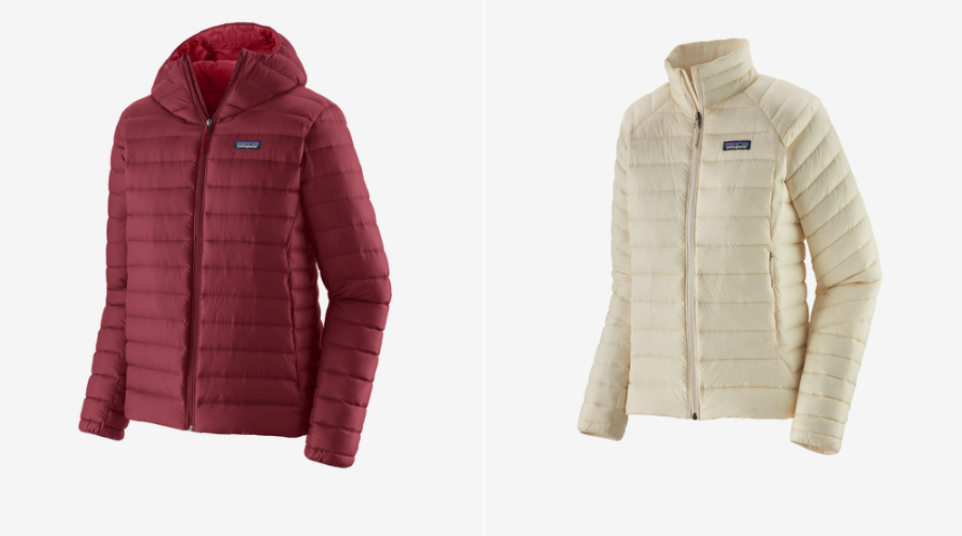
The Patagonia Down Sweater is snug, but it allows for great freedom of movement at the same time. The elastic cuffs feel nice, and the hem drawcord is recessed into the two handwarmer pockets. By pulling the cord in hand warmer pockets, you draw the hem in without having to fumble in the cold. The shell and the lining are fairly weather-resistant. The DWR treatment does a great job of shedding light rain and snow. It won’t hold up for very long in a full-blown storm, but it will keep the insulation dry long enough for you to find shelter. Since it is compressible and lightweight, it’s also a great option for cold summer adventures in the mountains.
Features:
Warm, windproof down jacket from ethical down and recycled polyester;
The warmest of these three jackets;
Center-front zipper has an interior storm flap and zipper garage at chin for next-to-skin comfort;
Single-pull-adjustable hood in hooded version;
Comfortable nylon-bound elastic cuffs and drawcord hem seal in warmth;
Two on-seam handwarmer pockets with welted zippers;
New model includes repair patches for quick fixes on the go;
Hooded and hoodless version;
Available in women's model and men's model.
Where to Buy?
backcountry.com (3-4% cashback)
dickssportinggoods.com (1.5-2% cashback)
Patagonia Nano Puff vs. Micro Puff vs. Down Sweater: Differences
Before diving into my in-depth discussion, look at the table below to get a key specs of them.
| Patagonia Nano Puff | Patagonia Micro Puff | Patagonia Down Sweater | |
| Weight | 306 g (10.8 oz) | 255 g (9 oz) | 420 g (14.8 oz) |
| Shell material | 1.4-oz 20-denier 100% recycled polyester | Pertex® Quantum 0.8-oz | 1.2-oz 20-denier NetPlus® 100% postconsumer recycled nylon |
| Insulation | 60-g PrimaLoft® Gold Insulation Eco 100% polyester | 65-g PlumaFill | 800-fill-power 100% Responsible Down |
Water repellent coating | X | X | X |
| Best temperature to use | 4 to 16 °C | 1 to 10 °C | -5 to 10 °C |
Insulation
The Primaloft Gold Eco Insulation material used in the Patagonia Nano Puff is extremely good at holding in your body heat and keeping you warm in pretty cold conditions. It’s warmer and lighter than lesser synthetic insulation, and it’s composed of over 50% recycled materials.
Patagonia has used a different type of insulation material in the new Micro Puff range, which called Plumafill insulation.This has been designed to replicate the structure of natural down. The Plumafill tends to perform slightly better than natural down in wet conditions, though, as it is synthetic, it doesn’t clump up when wet like down can sometimes do.
The Patagonia Down Sweater uses real down (800 fill power, ethically sourced goose down) which keeps highly warmer than Nano Puff and Micro Puff in dry weather. However, if it gets wet, it might not keep you warm anymore.
Warmth
The Patagonia Down Sweater contains 800 fill natural down. Down is so good at retaining heat as it traps air in the spaces between the down material and then heats it naturally. This then provides a layer of warm air between you and the conditions outside. So in dry conditions, the Patagonia Down Sweater can keep you warmer at lower temperatures than the Nano Puff and Micro Puff. However, Down Sweater does not perform well once they get wet. They take longer to dry, and any air the down material trapped soon disappears, along with any warmth it was retaining.
The Nano Puff and Micro Puff are still more than capable of keeping you warm and comfortable when you’re out in the cold. They hold up much better in wetter conditions. As they uses synthetic insulation, it does not have the problem of losing its heat-retaining properties once wet as the Down Sweater does. As we know that the synthetic insulation dries faster.
Compared to the Nano Puff, the Micro Puff is warmer. Because the Micro Puff has heavier insulation with 65 grams of PlumaFill and different baffles, allowing the synthetic insulation to mimic down a bit better than the Nano Puff's 60 grams of PrimaLoft.
Durability
The Patagonia Nano Puff, the Micro Puff and the Down Sweater are all pretty durable jackets.They can withstand carrying a backpack, the odd scrape and bump, and they both put up with the expected general use of an outdoor jacket pretty well. However, the Nano Puff has more durable materials. The 1.4-ounce 20-denier shell and 1.3-ounce 22-denier liner double to create a stronger outer layer than the Micro Puff's 0.8-ounce 10-denier shell.
The Patagonia Down Sweater comes with 1.2-oz 20-denier NetPlus® 100% postconsumer recycled nylon. You can expect it to be more abrasion-resistant than the Nano Puff and Micro Puff. The higher the denier, the tougher the fabric.
Fit
The Nano Puff and Micro Puff do fit a bit tighter than the down sweater, but it is still loose enough to be comfortable, and it doesn’t impact your mobility in any way. Because the man-made filling is easier to compress than real goose down, making the Nano Puff and Micro Puff’s silhouette a little more slimline.
The down insulation in the sweater is bulkier than the Nano Puff and Micro Puff’s synthetic insulation. The Down Sweater is more generously cut and therefore allows for more freedom of movement than the Nano Puff and Micro Puff. In terms of shape it feels just right – not too loose and not too tight either. While you can wear the Down Sweater beneath other layers, it is a bit more bulky.
Packability & Compressibility
All the three jackets can compress down into small packs. The down insulation can hold its shape better when compressed so it looks more natural when unpacked. The synthetic insulation in the Nano Puff and Micro Puff jackets tend to struggle a bit more to return to its desired shape after being packed away. So they have a more creased appearance than the down sweater.
When packed away, all the three jackets are compact. However, The Micro Puff does pack away to a smallest compressed size though (although there isn’t a huge difference). This is because the Micro Puff is far lighter of the option.The added bulk the down insulation adds to the down sweater that make it pack away to a largest compressed size among the three.
Water Resistance
All the three are coated with a DWR (durable water repellent), which helps to bead water as it hits the jacket resulting in water running off the down sweater rather than soaking through. The problem with this is that it is only a coating that will get worn away. In heavier downpours, the DWR will be overwhelmed, and water will start soaking your jacket.
Based on our own experience, the Down Sweater is better compared to the Nano Puff and Micro Puff when it comes to water resistance. Just keep in mind, when it gets wet, here comes the trouble.
Unlike the Down Sweater, the Nano Puff and and Micro Puff have tons of stitching sewn through it. If you wear a DWR-treated jacket in heavy rainfall for too long, the stitching will be the first to get saturated.
Pockets & Features
Pockets & Features
Looking at the pockets, the Patagonia Nano Puff, the Micro Puff and the Down Sweater all have side pockets in the front where you can warm your hands nicely. All of the pockets feature easy-to-grab pulls. To protect your stuff from getting wet, the zipper garages hold them in place.
The Patagonia Nano Puff has one zippered inside pocket that also features as a compressible pocket. So, you can compress your jacket down into the pocket pretty nicely. On the other hand, the Micro Puff and the Down Sweater have not a zippered pocket but actually has two large internal drop-in pockets with elastic on it.
One thing to consider here can be that the internal dump pockets of Nano Puff and Down Sweater overlap with hand warmers that take place on the other side of the garment. This might make the jacket less comfortable when you fill all of them up.
Some additional features that the Nano Puff and the Down Sweater have that the Micro Puff does not is cinch cord on the bottom hem. They both have a cinch cord so you can tighten it up as you like or loosen it to allow some warmth to get out. The Down Sweater even has better hem drawcords. It is located in the hand pockets, so you can adjust the hem without having to get your hands out of the pockets. On the other hand, the Patagonia Micro Puff doesn’t have this in an effort to be less weight.
Bottom Line
Patagonia Nano Puff vs. Micro Puff vs. Down Sweater: Which One is Best for You?
The Patagonia Nano Puff, the Micro Puff and the Down Sweater are all stunning and won't disappoint. Although the Nano Puff and Micro Puff's synthetic insulation stands up to moisture and frequent packing better, there's not much that can replace the warmth and performance that comes from classic down. There is no doubt that the Down Sweater is warmer than the Nano/Micro Puffs, but only consider it for dry areas. Because Down handles water contact terribly. So if you live in a dry, cold climate and want a lightweight jacket to keep you warm that looks good and is easy to carry in your kit bag, the Patagonia Down Sweater fits the bill very well.
Nano/Micro Puffs, on the other hand, are more weather resistant, longer and lighter than the Down Sweater. The Micro Puff can be seen as more of an evolution of the original Nano Puff instead of seeing it as an improvement. Neither will be suitable for extremely cold conditions, but they do an awesome job of keeping you warm, dry, and comfortable during wet weather conditions. So on the wet climate, it is a better option to go out with Nano Puff or Micro Puff.
When it comes down to actually choosing whether you are going to buy a Patagonia Nano Puff or a Micro Puff jacket – it will most likely be a financial decision. If you’re prioritizing pricing, get the Nano Puff since all items in the collection are about $50 cheaper than the same ones in the Micro Puff collection. On the other hand, if you want the lightest jacket you can get, grab one of the Micro Puffs – they truly offer unparalleled weight and warmth-weight ratio.

Extrabux is an international cashback shopping site, offering up to 30% cashback from 10,000+ Stores!
24S, SSENSE, MATCHESFASHION.COM, Shopbop, NET-A-PORTER, FARFETCH, YOOX, Eastbay, End Clothing, Macys, Neiman Marcus, Saks Fifth Avenue, Saks OFF 5TH, Bergdorf Goodman, Selfridges, Bloomingdales, Coggles, Harrods, Kohl's, Urban Outfitters, ASOS, Missguided, etc.
Join to get $20 welcome bonus now! (How does Welcome Bonus work?)
Recommendation
-

Is Turkish Airlines Good for International Flights?
-
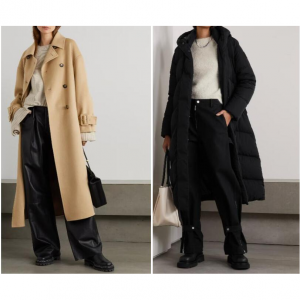
10 Best & Stylish Winter Coats for Women on NET-A-PORTER in 2025
-

Top & Best 12 Sneaker Apps/Websites for Raffles, Releases & Restocks in 2025
-

7 Best Gift Card Exchange Sites - Buy, Sell and Trade Discount Gift Card Safely and Instanly!
-

Top 9 Professional Skincare Brands for Licensed Estheticians 2025





